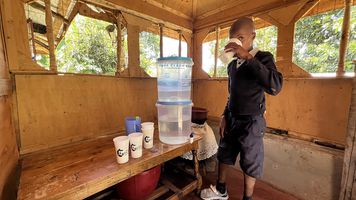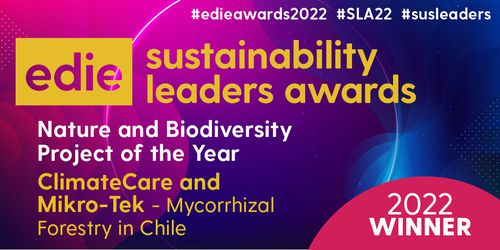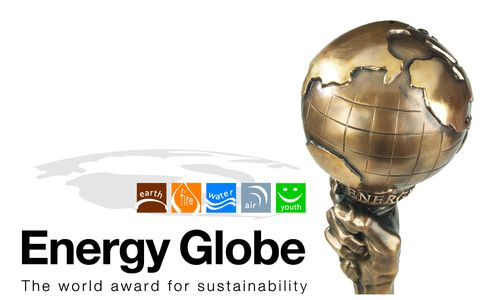With the support of companies like Microsoft, grassland projects are able to demonstrate their critical role in reducing carbon emissions and conserving valuable ecosystems.
Grasslands can be thought of as the reverse of rainforests, with 90% of their biomass below ground in the roots, which can reach up to six feet in length. Described as “the hidden half of nature” in Drawdown, the acclaimed analysis of the top solutions to deliver emissions reductions, the significant amounts of organic matter held in place by these long roots is heralded as “the lifeblood of the soil,” making it highly fertile, feeding the grass and, importantly, enhancing its ability to remove and store carbon (p71).
Depending on how they’re defined, grasslands account for between 20 and 40 percent of the world's land area and exist on every continent except Antarctica. Keeping natural grasslands intact and healthy keeps carbon locked below ground, while their grasses and shrubs continue pulling additional carbon from the atmosphere as they grow.
In fact, a 2018 study by University of California Davis found that grasslands may be more reliable carbon sinks than forests in places like California where wild fires are increasingly common. “In a stable climate, trees store more carbon than grasslands,” said study co-author Benjamin Houlton, Director of the John Muir Institute of the Environment at UC Davis. “But in a vulnerable, warming, drought-likely future, we could lose some of the most productive carbon sinks on the planet.” Rather than suggesting that grasslands should replace forests, or brushing off the many other benefits of trees, the study emphasises that in a more variable climate, the underground carbon stored in grassland root mass will be less susceptible to being released in the event of a fire or drought.
However, due to their dark, deep, rich and highly fertile soils and flat expanse, grassland areas are attractive locations for agriculture and are consequently being converted into croplands at the highest rate in decades. When grasslands are ploughed to make way for crop growth, nearly half of the carbon stored in the soil surface is lost to the atmosphere. Globally, every year approximately 1.7 million hectares of natural grasslands and shrub lands are being converted for crops or other uses - an area just larger than Connecticut. They may not have been thrust into the global limelight to the same extent as rainforests thanks to well-publicised “Save Our Rainforests” campaigns, but they are certainly in need of protection.
Fortunately, in 2018 The Climate Action Reserve agreed a methodology and process to measure and verify the carbon saved by preserving grasslands and avoiding the climate impacts of land conversion. This means that grassland owners can sell carbon credits, which can be purchased by businesses. Our Colorado grasslands project, supported by Microsoft, was the first to be registered under the Grassland Project Protocol. It conserves 23,000 acres of valuable prairie lands and consequently belowground soil carbon, while providing food, shelter, breeding ground, and migration corridors for many endangered and even endemic wildlife species, including the bison, swift fox, ferruginous hawk and burrowing owl. With no hunting, commerce nor recreation on the property, these species are able to thrive.
The finance from the sale of carbon credits contributes to the project’s goal of increasing the land area it conserves. Nicole Rosmarino, Executive Director of the Southern Plains Land Trust, says "Preserving the shortgrass prairie is a long-term and stable approach to protecting the climate. At the Southern Plains Land Trust, we're going even further, by using the proceeds from carbon credits to purchase more land to sequester even more carbon.”
“What a delightful feedback loop, not only for the climate but for the fascinating animals that call the prairie home. These include the U.S. National Mammal, the American bison, which we have reintroduced to our Heartland Ranch preserve. Bison maintain grasslands by knocking down shrubs and small trees. These rugged and charismatic creatures bring a dramatic element to an iconic landscape," continues Nicole.
We need new approaches, validated and encouraged by globally recognized markets, to reduce global carbon emissions. This innovative project has the potential to reduce emissions while also delivering co-benefits like protection of ecosystems and biodiversity.
Scientists estimate that plants absorb roughly a quarter of humanity’s carbon emissions each year, and yet, less than 10 percent of the world's grassland is protected. Found in environments with not enough rainfall to support the growth of a forest, but not so little that a desert forms, non-forest ecosystems such as grasslands should not be overlooked in global climate action.
It is estimated that grasslands will be able to generate 150,000 metric tons of emissions reductions on approximately 185,000 acres in the U.S. every year. Commitments from business to include these projects in their carbon neutral programmes, mean these important projects will be able to deliver on that ambition.
To find out more about the Colorado Grasslands project and our 16,000 acre Avoided Grassland Conversion (AGC) project in the Bitter Creek badlands of North-Eastern Montana, and to discuss how your company can support grassland ecosystems to reduce carbon and protect ecosystems, contact us.
Latest News

COP29 Wishlist: Time to Activate Article 6
With COP29 upon us, Climate Impact Partners' expert Article 6 team shares their COP29 wishlist.
Read more
Climate Impact Partners and Deloitte Join Forces to Unlock Large-Scale Seagrass Recovery Financing
Groundbreaking program to fund UK seagrass recovery and unlock long-term finance to save and reinstate vital seagrass meadows is announced.
Read more
Climate Impact Partners Wins Double in the Environmental Finance Awards
Climate Impact Partners has been awarded Best Offset Retailer for the 12th time and Best Project Best Project Developer: Public Health for the 11th time.
Read moreThe Latest Insights From
Climate Impact Partners

Four Facts You Didn’t Know About CDR Technologies
Here are four facts about CDR technologies that you probably didn’t know but should, to understand the need for these innovative solutions.
Read more
How to Pick Quality Projects and Partners: A Guide for Climate Leaders
Insights from our recent webinar on how to navigate the complexity of the voluntary carbon market and drive impact through your involvement.
Read more
Bridging the Emissions Gap: The Power of Internal Carbon Pricing
Private-sector climate action is more critical than ever and Internal Carbon Pricing (ICP) is a powerful tool to enable this.
Read more












